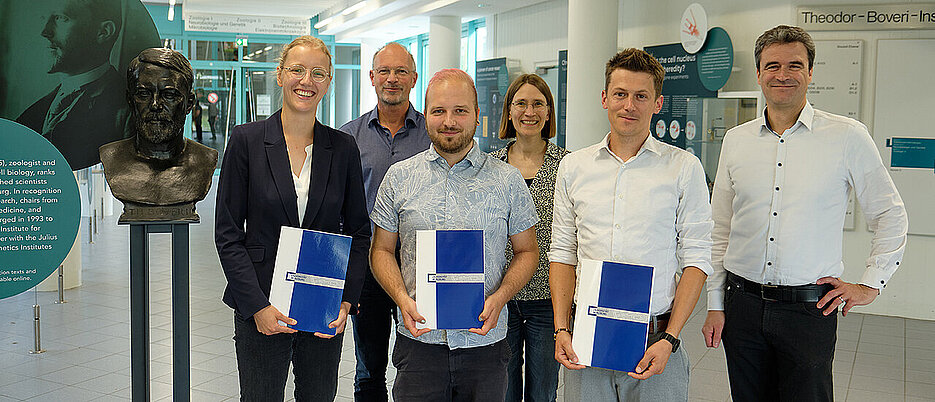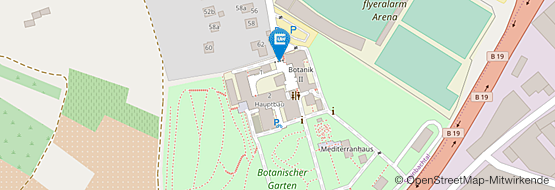Awards for three outstanding dissertations
07/29/2025Once a year, the Biocentre of the University of Würzburg presents the Science Award to outstanding junior researchers. In 2025, three young scientists received the award.

At the Biocentre of the University of Würzburg, scientists from the faculties of biology, chemistry and medicine conduct interdisciplinary research and teaching.Once a year, the Biocentre honours outstanding young researchers for their achievements during their doctorates with the Science Award.
The prizes are endowed with 500 euros each; they were awarded at the Biozentrum Day on 23 July. In 2025, the awards went to Dominic Helmerich, Maria Körner and Moritz Sexauer.
Beyond Super Resolution
Dominic Helmerich studied biology at JMU Würzburg. He completed his doctoral thesis, which was awarded summa cum laude, in Markus Sauer's research group at the Chair of Biotechnology and Biophysics. The aim of his work was to obtain microscopic information on structures that are still below the resolution limit of super-resolution microscopy. This resulted in four first-author publications (two of which appeared in Nature Methods), several co-author publications and a patent application.
The award committee writes: “In addition to his outstanding academic achievements, the jury was impressed how Dominic can communicate his research achievements in a generally understandable manner.”
Cellular quality control
Maria Körner studied biochemistry at JMU Würzburg. She completed her doctorate in Alexander Buchberger's research group at the Chair of Biochemistry I with summa cum laude. Her work focused on the ATPase p97, which plays an important role in protein quality control systems (PQC). Disruptions to this system can lead to neuromuscular diseases and cancer. Ms. Körner discovered and characterised relevant interaction partners of p97. Her findings were published in the journals elife and Nature Communications.
The award committee justified its decision as follows: “The jury was particularly impressed by the clear way Maria explained the rather complicated topic she is working on and the overwhelmingly positive feedback her work received from other scientists in her field of study.”
How does a plant determine the optimal level of symbiosis?
Moritz Sexauer studied nanoscience at the University of Tübingen. He completed his doctoral thesis, which was awarded summa cum laude, at the Chair of Plant Ecophysiology under the supervision of Katharina Markmann. He was able to show how nitrogen-fixing plants can regulate the extent of symbiosis with nitrogen-fixing bacteria by means of a microRNA produced in the shoot and targeted to a protein in the root. He published his findings in Nature Communications and Development as lead author and in Science as a co-author.
The award committee commented: “The jury wants to emphasize the far-reaching consequences his work can have on a global scale and the possibilities of his discoveries for real-world applications to ensure the food supply of the future.”






